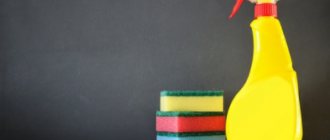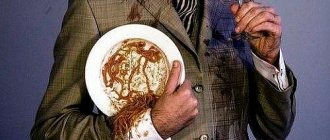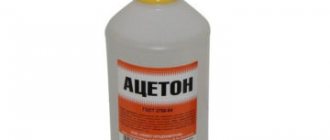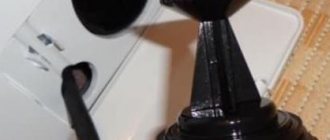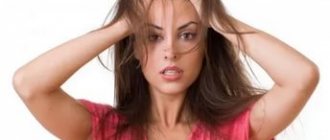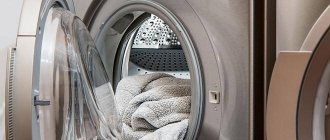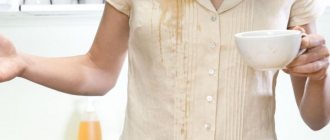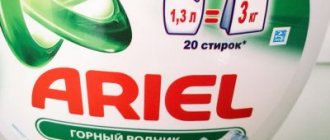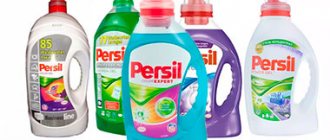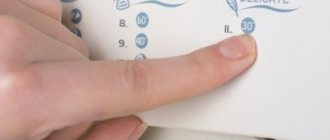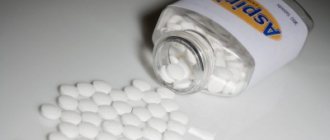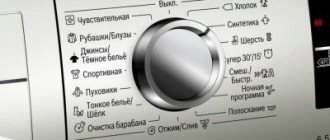White things look fresh, elegant and give a feeling of cleanliness. However, over time, the color fades and loses its original whiteness. How to bleach white clothes at home and make them dazzling? Read our article for a review of effective and affordable whitening methods.
Maintaining whiteness is not as difficult as it seems
Homemade Whitening Remedies
The industry does not stand still and today there are dozens of bleaches and stain removers on sale. For every type of fabric and for every budget you can find the best option. But for various reasons, such means are not always available to us: aggressive chemicals are not suitable for bleaching children's linen, they quickly thin out delicate fabrics and cause allergies. Experienced home remedies come to the rescue.
Soda
Baking soda will help restore the whiteness of cotton, linen and synthetics. With its help you can bleach yellowed white items and fabrics with colored prints:
- add 3 tbsp to the washing machine drum. l. soda and wash things in a suitable mode;
- dilute 5 tbsp in 5 liters of water. l. soda and 2 tbsp. l. ammonia. Soak the items for 3-4 hours and wash as usual;
- if the fabric allows, boil the item with powder and soda for about 30 minutes. For 1 liter of water, take 1 tbsp. l. soda and the usual amount of powder;
- to whiten children's clothes, dilute 2 tbsp. l. soda in 10 liters of water and soak the laundry for 3-4 hours;
- Soda and peroxide can deal with yellowness and sweat stains. Dissolve 1 tsp in 1 liter of water. soda and peroxide, soak the laundry for 10-15 minutes, rinse and wash as usual;
- For stubborn stains, use baking soda paste before washing. Dilute baking soda with a drop of water, apply the resulting paste to the stains, rub and leave to act for 30 minutes. Wash with soda, choosing one of the methods described above;
- Baking soda and vinegar can help remove stubborn stains. Apply baking soda paste to the stain, moisten with vinegar and rub lightly. When the fabric is dry, rinse the laundry and wash as usual. This method is not used for delicate fabrics.
Do not use baking soda to bleach silk and wool.
Soda solution is suitable for bleaching children's clothes, disinfects well and eliminates unpleasant odors
Peroxide
Hydrogen peroxide will help whiten white things and get rid of yellowness and stains. We list several ways:
- dissolve peroxide in water (1 tsp per 2 liters of water) and soak pre-washed items in the resulting solution. After 30 minutes, rinse the laundry with clean water;
- Peroxide with ammonia will help get rid of grayness. Dilute 2 tbsp in 10 liters of water. l. peroxide and ammonia, and soak the laundry for 30-40 minutes. Then wash in the traditional way;
- Instead of peroxide, you can use hydroperite. For 10 liters of water, 9 tablets are enough.
When using hydrogen peroxide for whitening, keep in mind that after uncorking the bottle, it retains its properties for 1 month. If you use a solution that has been open for a long time, the result will be zero.
Dry things after bleaching in the sun or in the cold - their color will become dazzling
Salt
Table salt will help whiten white synthetic and linen items. Dissolve the salt in warm water (2 tablespoons per 1 liter) and soak the washed laundry for 30-40 minutes. Rinse and hang to dry.
Salt will help whiten items that have turned gray from frequent washing.
Ammonia
Ammonia will help whiten white things:
- dilute ammonia in water (1 tablespoon per 1 liter of water), soak things for 3 hours and rinse. To enhance the effect, add 1 tbsp. l. grated laundry soap for each liter of solution;
- to bleach cotton and linen, dilute 5 tbsp in a bowl of hot water. l. ammonia and soak the laundry for 3 hours. Then wash things with laundry soap;
- for guipure and tulle, add 1 tbsp to a bowl of warm water. l. ammonia and 2 tbsp. l. peroxide, soak clean laundry for 30 minutes, rinse and dry.
Potassium permangantsovka
Potassium permanganate will help whiten faded items and get rid of yellowness.
Dilute soap shavings (100-150 g) in 10 liters of warm water. Prepare a weak solution of manganese by dissolving 3-5 crystals in a glass of warm water (make sure that the manganese dissolves completely, without sediment). Mix everything and soak clean laundry. Depending on the thickness of the fabric, soaking can last from 30 minutes to several hours. The thinner the fabric, the less time it takes to bleach. Terry towels can be soaked overnight. Rinse thoroughly.
Bleaching with potassium permanganate is a gentle method. It does not thin the fibers and is suitable for almost all types of fabric
Boric acid
Boric acid will help whiten white things.
Dilute a solution of boric acid (1 tablespoon per 2 liters of water) and soak the washed items for 2 hours. For maximum effect, use laundry soap: rub your laundry with it before soaking or add soap shavings to the boric acid solution (1 tablespoon per 1 liter of water).
Boric acid bleaching is used only for wear-resistant fabrics. Do not use it on delicate items.
Required accessories
Often, to combat grayness and stains at home, heat treatment is used, in other words, hot water or boiling. This is due to the fact that cleaning agents become active at high temperatures, and contaminants soften and become more pliable.
Therefore, one of the necessary elements in our work will be a gas or electric stove.
Other accessories:
- Metal container for boiling.
- A plastic basin or other convenient utensils for washing and rinsing.
- Household household products: hydrogen peroxide, ammonia, soda ash and baking soda, pharmacy aspirin, salt, washing powder, vegetable oil, vinegar, laundry soap.
- Old toothbrush.
- Dish sponge.
Let's move on directly to whitening methods. First, we will present the most gentle methods that are suitable for children's clothing.
How to bleach faded white clothes
Every housewife has had to deal with faded things - no one is immune from such incidents. Let's look at effective whitening methods.
For natural fabrics, use laundry soap. Rub the laundry thoroughly with it and soak for 6 hours in hot soapy water (1 tablespoon of soap shavings per 1 liter of water). Then wash the laundry and rinse thoroughly. If you do not want to soak, rub the laundry with laundry soap and boil for 1 hour. You can add soap shavings to the washing machine drum and wash at 90°C.
Dilute the washing powder in a bowl of hot water and add 1-2 tbsp for each liter of water. l. laundry soap shavings. Dissolve 3-5 potassium permanganate crystals in 1 glass (200 ml) of warm water and pour into a basin. You should end up with a foamy solution that is pale pink in color. Soak faded items for 2-3 hours. Rinse the laundry thoroughly after the procedure.
To prevent cotton and linen items from fading, wash them at a temperature no higher than 40 °C.
Many washing machines have a delicate wash cycle. Additionally, place items in a laundry bag or pillowcase - this way you will protect delicate fabric
Prepare the stain remover: mix 1 tbsp. l. citric acid, starch, soap shavings and table salt. Dilute with water to obtain a paste mixture. Apply to faded areas for 12 hours, then wash as usual. The method is suitable for almost all fabrics.
Dilute 20 ml of ammonia in 10 liters of boiling water and soak the faded item for 1-2 hours. Wash it. Use conditioner to get rid of ammonia smell.
To prevent things from fading and losing color, add a little table salt when washing.
Things to consider
- Before bleaching, be sure to pay attention to the material of the product and the symbols on the label. It should indicate at what temperature the laundry can be washed. This is important because many of the methods below use boiling water. For example, synthetics cannot be cleaned in hot water, unlike linen and cotton fabrics.
- If the item is expensive and you are afraid to experiment, it is better to take it to the dry cleaner.
- If the chosen method did not help the first time, then after washing you can repeat the bleaching using the same or a different method.
Boiling
Boiling, although outdated, is an effective way to bleach cotton linen. Dilute the powder or soap shavings in an enamel bucket, place the laundry, and boil for 1 hour. Stir the laundry periodically with wooden tongs.
Many housewives use boiling to bleach children's clothes.
How to return color to different types of fabric?
Depending on the type of fabric, priority bleaching methods will differ:
Cotton and linen items are not afraid of high temperatures, so they can be boiled. They are resistant to various types of bleaches, including chlorine. However, exposure time should be kept to a minimum.- Synthetic underwear is durable and wear-resistant, but does not tolerate contact with aggressive agents.
Therefore, preference should be given to gentle bleaches and folk remedies. You can use aspirin, laundry soap, lemon juice, soda, and ammonia. The maximum water temperature is 60 degrees. - Printed items should not be soaked in caustic substances. If such fabric has faded, then it must be handled carefully, trying not to get on the printed image.
- Snow-white satin should be washed in warm water (up to 40 degrees). It is not recommended to rub the fabric. The best bleaching agent is vinegar or oxygen stain remover.
- Woolen fabrics are treated only with liquid stain removers.
The more delicate the fabric, the more gentle the bleaching agents should be.
Use of whiteness
Bleach and other chlorine-containing products are only suitable for bleaching cotton and linen. When using bleach, wear gloves and a protective mask.
Dilute the white in water (1 tablespoon per 3 liters of water), add powder or soap, and soak the laundry for 20 minutes. Rinse the laundry and wash it in the traditional way.
Bleach items no more than once every 2-3 washes, otherwise the linen will lose strength.
Why don't all methods work the same?
Having studied the reviews of housewives, we realized that often the same products bring different effects. The fact is that some recipes are suitable for synthetics and cotton, others are contraindicated for artificial polymer fibers, others only work when heated, and others require pre-soaking the clothes.
There are also situations when it seems that the item has turned yellow due to improper washing. But in fact, frequent watering and bleaching procedures simply washed away the white paint, revealing a yellowish or gray base.
Often, homemade bleaching products do not cope with stains due to the persistence of pigments that stain clothes. In this case, you can resort to intensive measures and use chlorine bleaches.
Another reason for the ineffectiveness of methods is the selective activity of bleaching agents.
Drawing a conclusion, let’s say that you shouldn’t stop at one method and be upset that it didn’t help. In case of complex contamination, it may be necessary to use complex treatment. We offer universal methods that work in most cases.
Other whitening products
In conclusion, here are some more interesting methods of whitening:
| Means | Method | Additionally |
| Vegetable oil | 5 liters of water + 0.5 tbsp. powder + 0.5 tbsp. soap shavings + 2.5 tbsp. l. oils Soak for 3 hours. Wash | Removes greasy stains and whitens |
| Lemon acid | For 1 liter of boiling water 1 tbsp. l. citric acid. Soak for 5 hours. Rinse | Do not use on delicate fabrics |
| Aspirin | For 1 liter of water, 1 tablet (crush). Soak for 8 hours. Rinse | Eliminates yellowness and grayness. Suitable for wool. Can be added to the machine |
| Mustard powder | For 1 liter of boiling water 1 tbsp. l. mustard powder. Leave for 3 hours, strain. Soak the laundry for 0.5-3 hours. Wash | Disinfects, removes grease, suitable for delicate items and colored prints |
Types of pollution
Any product will work more effectively if used correctly; this requires information about the various types of contaminants. Conventionally, they are divided into stains from food products, cosmetics, medications, and animals.
From food products
Food stains appear most often on clothing. Removing such contaminants is not always easy. Grease stains cause problems for housewives. Removing stains from berries, vegetables and fruits is no less difficult.
Fresh stains can be removed at home, but if there is an old stain of this origin, ideal whitening almost always fails.
From cosmetics
Women's white clothing is susceptible to contamination from cosmetic products. Most often these are stains from powder, mascara, eye shadow and lipstick. Stains from nail polish are not easy to remove; often, it turns out that even after cleaning with nail polish remover, the pigment is firmly embedded in the fiber. Acetone can ruin the appearance of things.
From medications
Most often, stains arise from various ointments, iodine, brilliant green, etc. Such stains are difficult to remove. Most of the methods do not bring results and in the end the item is damaged irrevocably.
From animals
White items can be damaged by pets. Most often, they relieve themselves on clothes, and also trample them with dirty paws. In addition to stains, it is necessary to remove the smell from animals, which significantly delays the cleaning process.
In addition, white items can be damaged by blood stains after contact with grass and soil. If dirt remains on the fabric after washing, do not rush to get rid of the product. Use one of the folk remedies for whitening things.
General recommendations for bleaching items
To preserve the original whiteness of things, adhere to the following rules:
- do not soak for a long time and do not wash things at temperatures above 40 °C if they have metal elements;
- do not bleach things with rusty stains - as a result, the entire fabric will acquire a red tint;
- be sure to read the information on the tags;
- shake out the laundry before washing to avoid getting foreign objects;
- sort things. Wash white linen separately from dark and colored items, wool and silk separately from cotton and linen;
- wash new items separately;
- To prevent things from fading, pre-soak them in a solution of table salt. Salt has a fixing effect on paint;
- Remove only completely dry laundry; wet fabric is prone to grayness and streaks.
Snow-white things look neat, beautiful and solemn
Take care of your laundry from the first wash, bleach it correctly, and you will maintain its crystal whiteness for a long time. We hope that our tips will be useful to you. Share your experiences and impressions in the comments.
The best store-bought bleaches
If things start to turn yellow, you can get by with home remedies, or you can use professional laundry bleaches. Here is a ranking of the most popular and effective:
- Synergetic. The main advantage of the product is the absence of chlorine. The substance destroys tissue with frequent use. Therefore, bleach is gentle and safe for things. The effect is achieved through plant tensides, which help get rid of contaminants. Synergetic can be used on a variety of materials. This is a liquid product that does not contain dangerous and aggressive components. It can even be used to whiten children's clothes.
Universal liquid bleach “Synergetic” is designed for effective bleaching of all types of fabrics and children's underwear. - Lion Bright. A concentrated solution, even a small amount of which can get rid of old stains and stains. Removes yellowness and restores radiant appearance. In addition, the product has disinfectant properties and eliminates unpleasant odors. It is used as a traditional bleach, and is also added to laundry powder. The composition does not contain allergenic or aggressive ingredients.
Lion “Bright” oxygen bleach does not contain chlorine and provides simple and safe bleaching of silk, wool and cotton items. - Sarma Active. This bleach can restore whiteness even to those fabrics that cannot be soaked at high water temperatures (from 30 degrees). Does not contain chlorine, therefore it does not affect the structure of things and does not destroy them. This is an oxygen product that contains active enzymes. Effectively fights yellowness, grayness, and also removes dirty stains from clothes. Used on most types of fabric except wool and silk.
Bleach “Sarma Active”: designed specifically to enhance the effect of washing powder and whiten clothes and linen. - Dr. Beckmann. Super bleach contains natural ingredients that reflect light in the blue range. Thanks to this, things begin to look snow-white. Eliminates yellowness and gray tint. These are safe products that do not contain hazardous substances. All components are completely decomposed and do not pose a danger to the environment.
Bleach “Dr. Beckmann" with its new formula eliminates gray marks and yellowing even more effectively and returns your items to their radiant whiteness.
You can also use other popular means:
- Ecover;
- Chirton;
- Clean Home.
